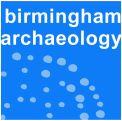Airborne LiDAR backscattered Laser Intensity Prediction of Organic Preservation
Keith Challis, Andy J. Howard, 2008. https://doi.org/10.5284/1000023. How to cite using this DOI
Data copyright © Keith Challis, Andy J. Howard unless otherwise stated
This work is licensed under the ADS Terms of Use and Access.
Primary contact
Keith
Challis
Birmingham Archaeology
Birmingham Archaeology
University of Birmingham
Edgbaston
Birmingham
B15 2TT
UK
Tel: 0121 414 5513
Resource identifiers
- ADS Collection: 827
- ALSF Project Number: 4782
- DOI:https://doi.org/10.5284/1000023
- How to cite using this DOI
Introduction
The research for this project is led by Mr Keith Challis (HP Vista Centre) and Dr Andy J Howard (Institute of Archaeology and Antiquity) both University of Birmingham with funding from the Aggregates Levy Sustainability Fund as administered by English Heritage.
This project aims to benefit stakeholders within the aggregates industry, from quarries companies submitting planning applications through to individuals and bodies responsible for commissioning archaeological investigations within the framework of PPG 16, and curatorial archaeologists also working within the PPG16 framework. Project work will benefit these groups by providing an authoritative assessment of the use of lidar backscattered laser intensity as a tool for detecting archaeological features and remotely predicting organic preservation of waterlogged deposits in aggregate bearing environments. Such rapid assessment may save aggregate companies the expense of prospection within areas that have high potential for organic preservation, or paying for expensive mitigation strategies in areas where the organic potential of organic deposits is low. It may also provide information on the condition of valley floor deposits prior to dewatering.
The project contributes towards Trent Valley GeoArchaeology, a group of organisations and individuals with interests and involvement in the archaeology and palaeoenvironments of the Trent Valley, the River Trent and its tributaries.







